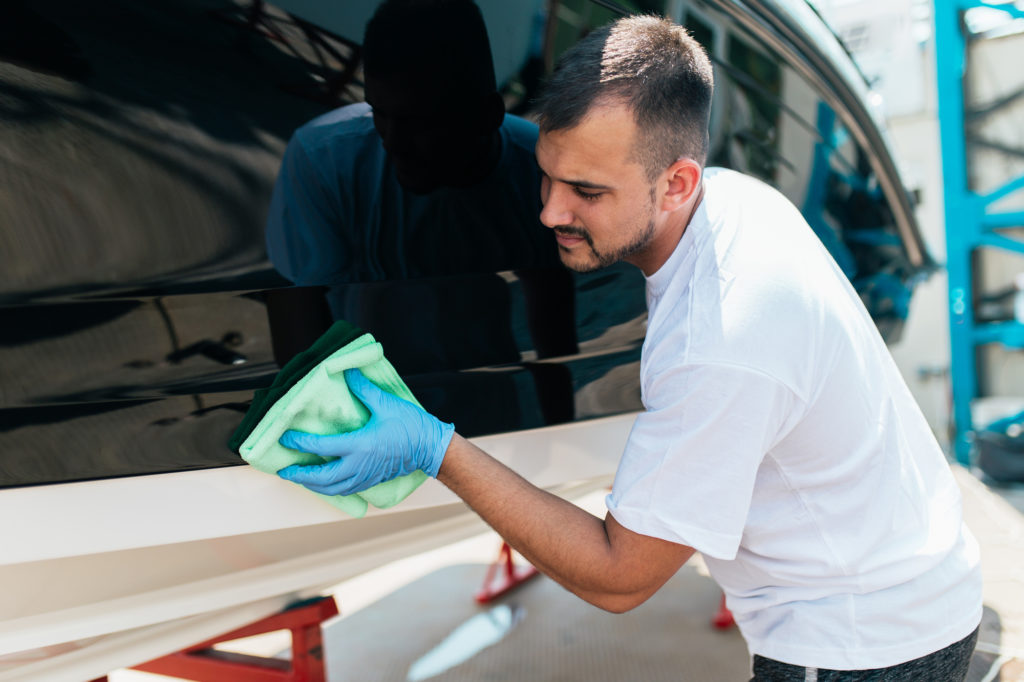
You had a dream of owning your own boat. You did your homework. You followed the beginner’s guides to buying a boat.
The day has come and you are now the proud owner of a brand new boat. As a new owner, you need to know proper boat maintenance. This will keep your boat running and looking great.
You aren’t alone in facing the new challenge of boat care. In 2016 247,800 boats were sold, and those numbers have continued to rise through 2017 and 2018.
Follow our comprehensive guide and your boat will continue to run great.
1. Fuel System
Check the fuel system for leaks, and damage. You’ll want to look at the hoses and connections. They need replacing if they are cracked or brittle.
Check that the fuel shut off valves are in working order. You also want to check the fittings and clamp for corrosion.
2. Electrical System
Like faulty electrical in your home, you need to look for it on your boat too. Make sure that none of the electrical is corroding.
Use a wire brush to clean off any corrosion you find. Then charge and check your battery.
3. Fluid Levels
Check your engine oil, power steering, power trim reservoirs, and coolant. These will keep your boat in working order.
If you winterize your boat you should change the oil before putting it in storage. If you use it year round you should change the oil based on the manufacturer’s recommendation.
4. Fire Extinguishers
You’re on a boat surrounded by water, why do you need a fire extinguisher? Fire is one of the top five reasons for boat loss.
Most of these fires start in the engine bay. Here you will find electrical components and gasoline near each other.
It’s not enough to have a fire extinguisher. They need to be up to date and accessible. You also need to know how to use them.
5. Propeller & Hulls
Arrange to have your boat taken out of the water and dry dock it for a bit. This will give you a chance to inspect your hull and propeller.
Propeller
Inspect your propeller for dings, cracks, pitting, or distortion. If you find your propeller has these, you need to consider replacing it. These defects in your propeller will cause vibration and damage your drivetrain.
To replace your propeller you need to choose between stainless and aluminum boat propellers. Need help deciding, read more here.
Hull
Look for blisters in your hull. These will look like bubbles or bubbles that have broken.
As fiberglass ages, the layers begin to separate. This causes the blistering. If you discover blistering you need this addressed immediately.
Remember to replace your drain plug before you put the boat back in the water. This is a common mistake that even veteran boaters can make.
Gelcoat
If the hull of your boat is fiberglass then it most likely has a gelcoat on it. This is a tough protective coating over the fiberglass.
If your fiberglass is hazy or chalky then it is in bad condition. To keep your gelcoat looking good you will need to wax and polish it.
The wax protects and seals the gelcoat. This keeps out dirt, salt, and UV rays.
The polish is what makes the gelcoat look good. It removes oxidation and makes the gelcoat shine.
Maintain the gelcoat by washing away salt after each time you use the boat. Try not to use harsh cleaners.
The harsher the cleaner the quicker it will strip away your wax and polish. Then you will be reapplying them.
Always use a soft bristle brush on your gelcoat. A hard bristle brush can actually create scratches in the gelcoat.
6. Safety Gear
At least once a year you should go through the required safety equipment on your boat. If you store your boat for the winter it is best to do this check when you bring it out in the spring.
Check the lifejackets. They should all be in good condition. You should also have enough for the number of people that will use the boat.
You can contact the US Coast Guard to see if they offer safety inspections. They will board your boat and go through their checklist of required safety equipment.
This is smart if you are unsure of what you need. If you are stopped by the Coast Guard or police for a random check they will use the same checklist.
7. Ground Tackle
You should have two anchors on board. The two anchors need to be large enough to hold your boat.
Check the chain and rope connected to each of the anchors. Look for wear on the chocks. These components wear over time and can cause chaos and damage if they fail.
You don’t want to be in a storm and have the anchor chain break. Because with boating, if it’s going to break, it will at the worst time possible.
8. Bilge Pumps
Is the bilge pump removing water adequately? What is your backup system in case the pump stops working?
Check the automatic switch. It’s normal for you to see an inch or two of water in the bilge.
If you see more than this, your auto turn on may not be working. Your boat will continue to take on water. Too much water and you’re sunk, literally.
9.Corrosion Prevention
Knowing how to clean a boat the right way will prevent corrosion from taking over. Pay special attention to the fastenings around your boat.
The other common place for corrosion is the bearings, steering cables, and the engine. You need to paint or lubricate to prevent corrosion in the future.
10. Batteries
Check that the storage location of your batteries is in a noncorroding unit. The container needs to be liquid-tight and ventilated.
Check how the battery is held in place. You don’t want your battery coming loose and bouncing around while you are on plane.
11. Stoves
Regular boats intended for day use do not have stoves. However, boats the accommodate sleeping and live aboard do have a stove.
If you bought a boat with a stove, you need to make sure it is intended for marine use. Check your ventilation so the carbon monoxide gets removed from the cabin.
Check the fuel tank to make sure the shut-off valve is in working order. Then follow the lines to make sure they and the fittings are in good condition and properly hooked up.
12. Woodwork
If you bought an older boat, it likely has woodwork. It’s most common on the headrails, toerails, steps, and decking.
This wood should be teak or another tropical hardwood. Any other type of wood will rot in the moisture rich environment.
Untreated Teak
Untreated teak turns grey when left in the sun. This is technically ok, but it does need occasional cleaning.
Once a season buy a mild teak cleaner and start scrubbing against the grain. Going with the grain removes the soft pulpwood and you’ll end up with unsightly ridges.
Treated Teak
Treating your teak with varnish oil or sealers will keep it looking brand new. If this is the look you are going for, plan to reapply once or twice a year.
13. Canvas and Upholstery
You will find that most boats have canvas, vinyl, and PVC materials used on them. The key to making them last is to keep them clean.
Canvas
Use a stiff brush and some mild soap and water. This method will keep the UV protectant intact.
Treat it with a water repellent fabric guard when you are done cleaning. This will help boost the canvas’ ability to repel water.
PVC
The PVC is the clear plastic parts of your fabric. It makes the windows when you have the bimini top up.
Never clean the PVC with an ammonia-based product. It may look like a window, but don’t use Windex on it. The ammonia will turn it yellow and brittle.
Buy a plastic cleaner designed to clean these parts. This will keep them clear and supple for years.
Vinyl
Some mild soapy water should be enough for routine cleaning. Do not use bleach or ammonia based products.
These products do produce white results. They also break down the materials and ruin is over time.
Start Your Boat Maintenance Checklist
Use this boat maintenance checklist to work your way through your boat. This way you go over each part of your boat.
By having a regular maintenance routine you reduce the chance for unpleasant surprises. It also reduces the risk of a dangerous situation.
Maintenance to the canvas, vinyl, and teak are all cosmetic. Doing these tasks will save you money on delaying the need for replacement.
Checking your engine and electrical will keep you safe from potentially dangerous situations. Checking your propeller and hull will ensure your boat runs great and saves you from very expensive repairs.
Now time for some fun with your boat, these cool boat accessories are what you need.

